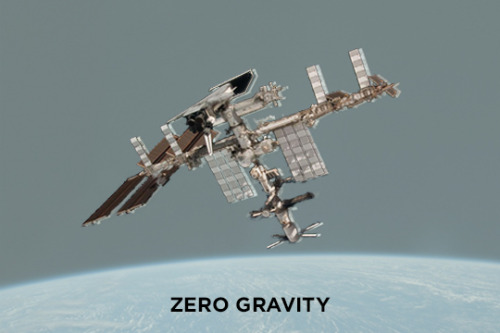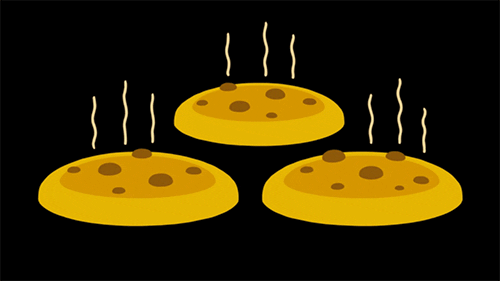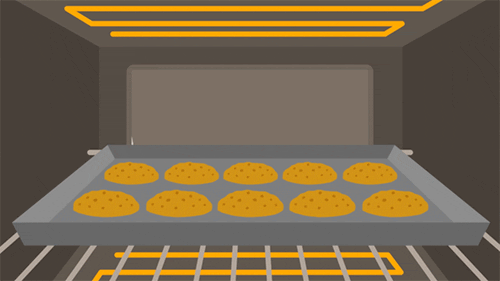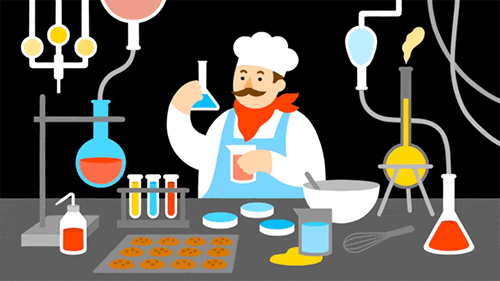Bringing Silicon To Life: Scientists Persuade Nature To Make Silicon-carbon Bonds

Bringing silicon to life: Scientists persuade nature to make silicon-carbon bonds
A new study is the first to show that living organisms can be persuaded to make silicon-carbon bonds – something only chemists had done before. Scientists at Caltech “bred” a bacterial protein to make the humanmade bonds – a finding that has applications in several industries.
Molecules with silicon-carbon, or organosilicon, compounds are found in pharmaceuticals as well as in many other products, including agricultural chemicals, paints, semiconductors, and computer and TV screens. Currently, these products are made synthetically, since the silicon-carbon bonds are not found in nature.
The new study demonstrates that biology can instead be used to manufacture these bonds in ways that are more environmentally friendly and potentially much less expensive.
“We decided to get nature to do what only chemists could do – only better,” says Frances Arnold, Caltech’s Dick and Barbara Dickinson Professor of Chemical Engineering, Bioengineering and Biochemistry, and principal investigator of the new research, published in the Nov. 24 issue of the journal Science.
Read more.
More Posts from Smparticle2 and Others

Packing numerous books and papers that he plans to read over winter break, the grad student deludes himself.

Self-assembling particles brighten future of LED lighting
Just when lighting aficionados were in a dark place, LEDs came to the rescue. Over the past decade, LED technologies – short for light-emitting diode – have swept the lighting industry by offering features such as durability, efficiency and long life.
Now, Princeton engineering researchers have illuminated another path forward for LED technologies by refining the manufacturing of light sources made with crystalline substances known as perovskites, a more efficient and potentially lower-cost alternative to materials used in LEDs found on store shelves.
The researchers developed a technique in which nanoscale perovskite particles self-assemble to produce more efficient, stable and durable perovskite-based LEDs. The advance, reported January 16 in Nature Photonics, could speed the use of perovskite technologies in commercial applications such as lighting, lasers and television and computer screens.
“The performance of perovskites in solar cells has really taken off in recent years, and they have properties that give them a lot of promise for LEDs, but the inability to create uniform and bright nanoparticle perovskite films has limited their potential,” said Barry Rand an assistant professor of electrical engineering and the Andlinger Center for Energy and the Environment at Princeton.
Read more.




Astronaut Scott Kelly has spent more time in space than any other American. He has also played solo ping pong with a ball of water and two hydrophobic paddles. Scott Kelly is an American hero.
Image Credit: NASA
5 Cookie Pro Tips from TED-Ed (and Science)

1. Cookies are for everyone. But everyone has cookie preferences. When you slide that cookie tray into the oven, you’re setting off a series of chemical reactions that transform one substance - dough - into another - cookies! The better you understand ‘Cookie Chemistry’, the better equipped you will be to create the cookies you crave.

2. Lots goes on in that oven, but one of science’s tastiest reactions occurs at 310º. Maillard reactions result when proteins and sugars breakdown and rearrange themselves into ring like structures which reflect light in a way that gives foods their distinctive, rich brown color. As this reaction occurs, it produces a range of flavor and aroma compounds, which also react with each other forming even more complex tastes and smells.

3. The final reaction to take place inside your cookie is caramelization and it occurs at 356º. Caramelization is what happens when sugar molecules breakdown under high heat, forming the sweet, nutty and slightly bitter flavor compounds that define…caramel! So if your recipe calls for a 350º oven - caramelization will never happen.
So, if your ideal cookie is barely browned - 310º will do. But if you want a tanned, caramelized cookie, crank up the heat! Caramelization continues up to 390º degrees.

4. No need to check that oven like a fiend. You don’t even really need a kitchen timer - when you smell the nutty, toasty aromas of the Maillard reaction and caramelization, your cookies are ready!

5. Baking is chemistry, friends! That’s right - PURE. SCIENCE. Check carefully before altering those recipes - chances are some of those ingredients and quantities are there for a reason.
Curious what else happens in that oven? Check out the TED-Ed Lesson The chemistry of cookies - Stephanie Warren
Animation by Augenblick Studios


If you’ve ever watched a rocket launch, you’ve probably noticed the billowing clouds around the launch pad during lift-off. What you’re seeing is not actually the rocket’s exhaust but the result of a launch pad and vehicle protection system known in NASA parlance as the Sound Suppression Water System. Exhaust gases from a rocket typically exit at a pressure higher than the ambient atmosphere, which generates shock waves and lots of turbulent mixing between the exhaust and the air. Put differently, launch ignition is incredibly loud, loud enough to cause structural damage to the launchpad and, via reflection, the vehicle and its contents.
To mitigate this problem, launch operators use a massive water injection system that pours about 3.5 times as much water as rocket propellant per second. This significantly reduces the noise levels on the launchpad and vehicle and also helps protect the infrastructure from heat damage. The exact physical processes involved – details of the interaction of acoustic noise and turbulence with water droplets – are still murky because this problem is incredibly difficult to study experimentally or in simulation. But, at these high water flow rates, there’s enough water to significantly affect the temperature and size of the rocket’s jet exhaust. Effectively, energy that would have gone into gas motion and acoustic vibration is instead expended on moving and heating water droplets. In the case of the Space Shuttle, this reduced noise levels in the payload bay to 142 dB – about as loud as standing on the deck of an aircraft carrier. (Image credits: NASA, 1, 2; research credit: M. Kandula; original question from Megan H.)



Scientists report the first scientific results from NASA’s Juno mission, now in orbit around Jupiter.
This week, a suite of 46 separate scientific papers describe different aspects of the giant planet Jupiter, from its massive polar cyclones, to its complex magnetic field, to its unique radiation environment. The papers mark the first full scientific results from NASA’s Juno mission, which arrived in orbit around Jupiter last summer. Later this July, the craft is slated to overfly the planet’s Great Red Spot, bringing back still more data. Juno program scientist Jared Espley and Juno radiation monitoring investigation lead Heidi Becker join Ira to sum up some of the Jovian surprises, as well as give a preview of what still lies ahead for the Juno mission. Listen here to learn more.
[Photos by NASA/JPL/MSSS/Gerald Eichstädt/Justin Cowart/Alexis Tranchandon/Solaris]
The Science of Smog
On July 26, 1943, Los Angeles was blanketed by a thick gas that stung people’s eyes and blocked out the Sun. Panicked residents believed their city had been attacked using chemical warfare. But the cloud wasn’t an act of war. It was smog. A portmanteau of smoke and fog, the word smog was coined at the beginning of the 20th century to describe the thick gray haze that covered cities such as London, Glasgow, and Edinburgh.

This industrial smog was known to form when smoke from coal-burning home stoves and factories combined with moisture in the air. But the smog behind the LA panic was different. It was yellowish with a chemical odor. Since the city didn’t burn much coal, its cause would remain a mystery until a chemist named Arie Haagen-Smit identified two culprits, volatile organic compounds, or VOCs, and nitrous oxides. VOCs are compounds that easily become vapors and may contain elements, such as carbon, oxygen, hydrogen, chlorine, and sulfur. Some are naturally produced by plants and animals, but others come from manmade sources, like solvents, paints, glues, and petroleum. Meanwhile, the incomplete combustion of gas in motor vehicles releases nitrous oxide. That’s what gives this type of smog its yellowish color.

VOCs and nitrous oxide react with sunlight to produce secondary pollutants called PANs and tropospheric, or ground level, ozone. PANs and ozone cause eye irritation and damage lung tissue. Both are key ingredients in photochemical smog, which is what had been plaguing LA.
Smog isn’t just an aesthetic eyesore. The two forms of smog irritate the eyes, nose, and throat, exacerbate conditions like asthma and emphysema, and increase the risk of respiratory infections like bronchitis. Smog can be especially harmful to young children and older people and exposure in pregnant women has been linked to low birth weight and potential birth defects. Secondary pollutants found in photochemical smog can damage and weaken crops and decrease yield, making them more susceptible to insects.

After the Great Smog of London shut down all transportation in the city for days and caused more than 4,000 respiratory deaths, the Clean Air Act of 1956 banned burning coal in certain areas of the city, leading to a massive reduction in smog. Similarly, regulations on vehicle emissions and gas content in the US reduced the volatile compounds in the air and smog levels along with them.
Smog remains a major problem around the world. Countries like China and Poland that depend on coal for energy experience high levels of industrial smog. Photochemical smog and airborne particles from vehicle emissions affect many rapidly developing cities, from Mexico City and Santiago to New Delhi and Tehran. Governments have tried many methods to tackle it, such as banning cars from driving for days at a time. As more than half of the world’s population crowds into cities, considering a shift to mass transit and away from fossil fuels may allow us to breathe easier.
From the TED-Ed Lesson The science of smog - Kim Preshoff
Animation by Juan M. Urbina Studios

Chemists discover structure of bacterial enzyme that generates useful polymers
MIT chemists have determined the structure of a bacterial enzyme that can produce biodegradable plastics, an advance that could help chemical engineers tweak the enzyme to make it even more industrially useful.
The enzyme generates long polymer chains that can form either hard or soft plastics, depending on the starting materials that go into them. Learning more about the enzyme’s structure could help engineers control the polymers’ composition and size, a possible step toward commercial production of these plastics, which, unlike conventional plastic formed from petroleum products, should be biodegradable.
“I’m hoping that this structure will help people in thinking about a way that we can use this knowledge from nature to do something better for our planet,” says Catherine Drennan, an MIT professor of chemistry and biology and Howard Hughes Medical Institute Investigator. “I believe you want to have a good fundamental understanding of enzymes like this before you start engineering them.”
Read more.

Henry Cabot Lodge Jr. presenting “The Thing” to the Security Council at the United Nations. 26 May 1960.
via reddit
Keep reading




-
 themarketingarea reblogged this · 8 years ago
themarketingarea reblogged this · 8 years ago -
 unavidamoderna liked this · 8 years ago
unavidamoderna liked this · 8 years ago -
 marimojr liked this · 8 years ago
marimojr liked this · 8 years ago -
 lnlr liked this · 8 years ago
lnlr liked this · 8 years ago -
 transfeminineidiotwithabox liked this · 8 years ago
transfeminineidiotwithabox liked this · 8 years ago -
 hungwy liked this · 8 years ago
hungwy liked this · 8 years ago -
 peucetiaviridans liked this · 8 years ago
peucetiaviridans liked this · 8 years ago -
 prussian-grenadier liked this · 8 years ago
prussian-grenadier liked this · 8 years ago -
 taskitron liked this · 8 years ago
taskitron liked this · 8 years ago -
 devourer-of-acetone reblogged this · 8 years ago
devourer-of-acetone reblogged this · 8 years ago -
 kennethstudstill liked this · 8 years ago
kennethstudstill liked this · 8 years ago -
 monicafoshaug liked this · 8 years ago
monicafoshaug liked this · 8 years ago -
 uncommonlybeautifulblog liked this · 8 years ago
uncommonlybeautifulblog liked this · 8 years ago -
 kalifissure liked this · 8 years ago
kalifissure liked this · 8 years ago -
 crystals-and-catalysis-blog liked this · 8 years ago
crystals-and-catalysis-blog liked this · 8 years ago -
 slideshowrob liked this · 8 years ago
slideshowrob liked this · 8 years ago -
 captaindoubled reblogged this · 8 years ago
captaindoubled reblogged this · 8 years ago -
 marschattpanosh reblogged this · 8 years ago
marschattpanosh reblogged this · 8 years ago -
 marschattpanosh liked this · 8 years ago
marschattpanosh liked this · 8 years ago -
 psychoxknyte reblogged this · 8 years ago
psychoxknyte reblogged this · 8 years ago -
 rametarin liked this · 8 years ago
rametarin liked this · 8 years ago -
 lckyln liked this · 8 years ago
lckyln liked this · 8 years ago -
 materialsworld reblogged this · 8 years ago
materialsworld reblogged this · 8 years ago -
 saturnusminor liked this · 8 years ago
saturnusminor liked this · 8 years ago -
 erickdlr-14911 reblogged this · 8 years ago
erickdlr-14911 reblogged this · 8 years ago -
 smparticle2 reblogged this · 8 years ago
smparticle2 reblogged this · 8 years ago -
 thefo0ol liked this · 8 years ago
thefo0ol liked this · 8 years ago -
 qxzyz liked this · 8 years ago
qxzyz liked this · 8 years ago -
 minotaurconnoisseur liked this · 8 years ago
minotaurconnoisseur liked this · 8 years ago -
 scorned-beef reblogged this · 8 years ago
scorned-beef reblogged this · 8 years ago -
 nebula-monster-blog reblogged this · 8 years ago
nebula-monster-blog reblogged this · 8 years ago -
 veritascorpion liked this · 8 years ago
veritascorpion liked this · 8 years ago -
 littlesoybean liked this · 8 years ago
littlesoybean liked this · 8 years ago -
 al8675309 liked this · 8 years ago
al8675309 liked this · 8 years ago -
 paperhalidom reblogged this · 8 years ago
paperhalidom reblogged this · 8 years ago -
 paperhalidom liked this · 8 years ago
paperhalidom liked this · 8 years ago -
 naytile liked this · 8 years ago
naytile liked this · 8 years ago